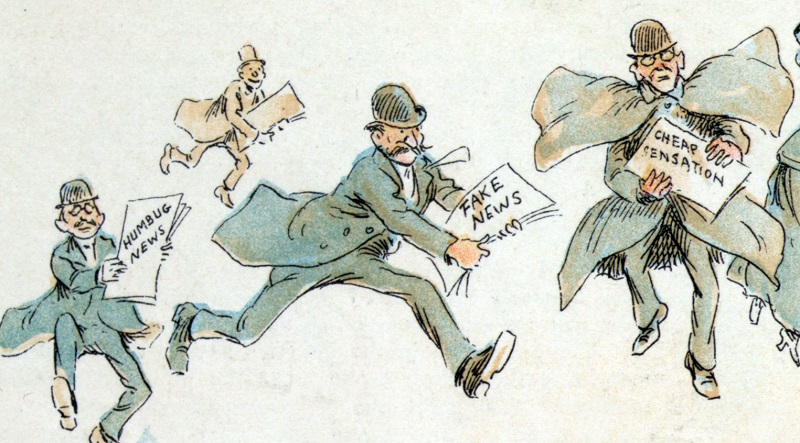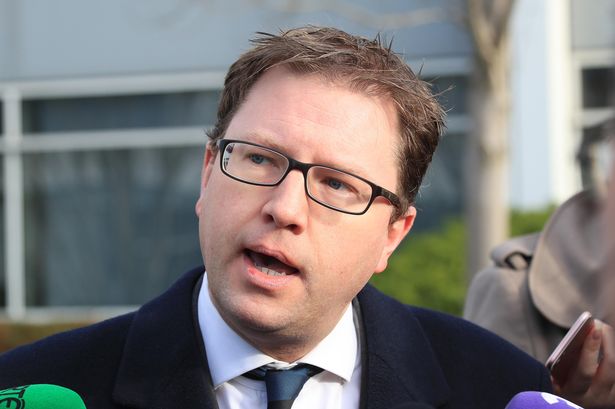By
PAUL DEMPSEY
This article featured in The Sunday Business Post on 15 July 2018.

A 2005 study found that almost half of African Americans believed that HIV, the virus that causes AIDS, was man-made. This theory was one actively spread by the Soviet Union during the 1980s. As Sun Tzu wrote, “If sovereign and subject are in accord, put division between them.”
History is littered with countless such examples and quotes regarding the power of disinformation. Fake news is nothing new. What makes the contemporary iteration so virulent is the speed and scale of what is possible.
According to the report, ‘The Stealth Media? Groups and targets behind divisive issue campaigns on Facebook’, “the behind-the-scenes information operation on digital media is above and beyond any other operation we have ever seen in the past in terms of its scale, speed, and most importantly, its capacity to amplify information”.
Previous attempts to spread mis- or disinformation relied on ‘one-to-many’ broadcasts. Social networks allow the direct targeting of users based on the probability that they will accept and share a message. This effect compounds, preying on the human tendency to mistake popularity for credibility.
A delicate balancing act
The Irish referendum on the Eighth Amendment seemed to offer an opportunity for a domestic demonstration of fake news tactics. That prospect spurred some civic-minded groups, such as the Transparent Referendum Initiative, to record the sources of ads posted on social media. It also contributed to the decision of Facebook and Google to cease accepting ads related to the campaign.
What it did not do was spur the Irish Government to action. This caution was understandable. If the Government were seen to tip the scales in favour of either side, it may have damaged trust in our democracy.
However, doing nothing carried the very real risk of a foreign power influencing our democratic process, and, while it may have suited the vast majority of politicians to stand idly by while Google and Facebook stepped into the regulatory void during a controversial referendum, it is unlikely that they would be so understanding were the same to happen during a general election campaign.
Taking action at home
Facebook may receive a lot of criticism, but it is an essential tool for communicating with voters and organising activists, many of whom might otherwise have no interest in politics. It is important that politicians, in their efforts to protect against the worst excesses of fake news, do not destroy the many positives that social media brings to society.
Several European countries have failed to find that balance. Proposed legislation in France has been widely criticised for threatening freedom of speech. A new law compelling social media companies to remove hate speech and other illegal content was introduced in Germany this year. Human Rights Watch stated that this law “sets a dangerous precedent for other governments looking to restrict speech online by forcing companies to censor on the government’s behalf”.

Recently, James Lawless’s Social Media Transparency Bill was before the Oireachtas communications committee. This bill seeks to increase the transparency around social media ads rather than police content.
The bill applies to paid political advertising and the deliberate usage of multiple fake accounts for political purposes. It would require a disclosure statement stating exactly who published and sponsored each post and who the target audience was.
While it may gall some in Fine Gael to accept a bill that originated with Fianna Fáil, it has received widespread support. Such a move would serve as evidence that ‘new politics’ can still function in the national interest, and it may spur some goodwill towards enabling the current confidence and supply arrangement to extend into 2019 as the country grapples with the consequences of Brexit.
Maintaining trust and building credibility
Either way, this bill alone will not solve the problem of fake news. The response must be multi-faceted and wide-ranging. Digital literacy needs to be promoted at all levels of Irish society.
The 2018 Reuters Digital News Report showed some of our shortcomings in this area, highlighting that only 28% of Irish people understand how Facebook’s algorithms determine which news stories they see.
The Junior Cert has a new short course, ‘Digital Media Literacy’. Incorporating this into the full-time curriculum could be one way of inoculating our young people against fake news.
For brands, building and maintaining trust with the public is key. While the number of platforms and channels for news continues to grow, established names like RTÉ News and The Irish Times still have the highest ‘brand trust scores’, whether their content is accessed in print or online.
Maintaining standards and prioritising in-depth and investigative reporting, rather than clickbait and hot takes, is the only way for younger news brands to build credibility to similar levels. This requires a significant initial investment of time and money, but it will pay off in the long-term.
Trust in news grew in Ireland by 8% between 2017 and 2018, but that cannot be cause for complacency. To nurture this growth, the Government must take proactive measures which do not restrict speech on social media, but help to increase transparency. Ireland is proud of the world-leading, innovative measures it has taken to protect public health in the form of tobacco bans and sugar taxes. It’s time we applied the same forward-thinking spirit to protecting the health of our democracy.
